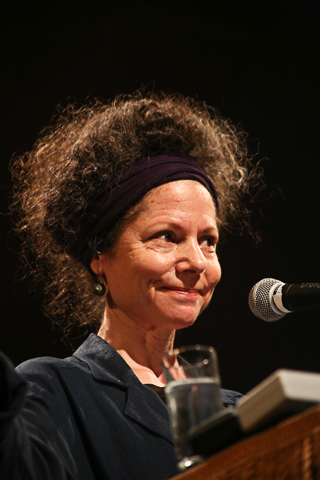I keep thinking about an old Kaiser study: if someone believes firmly in one idea-- say that the Earth is flat-- and then hears that the Earth is round, the person will likely attach more strongly to their original belief.
Today, people commonly believe that technology improves our communications, solves all manner of medical and ecological problems, and keeps our environment "green and clean". Marketers promote these ideas in full force! But if we look at devices and infrastructures from their cradles to their graves, evidence shows that computers, Internet infrastructure, solar PVs, battery energy storage systems (BESS), wind facilities, e-vehicles, smartphones, smart meters, telemedicine and A.I degrade wildlife habitats and public health. Some manufacturing engages slave laborers. Operating electronics creates extreme fire hazards, demands extraordinary amounts of water, and makes us dependent on international supply chains while we lose human know-how.
Consider my reports an invitation-- to join me in discussing our assumptions about electronic technologies, reducing their ecological and public health impacts, and moving toward living within our ecological means.
WELCOMING RESPECTFUL DISCUSSION
In April, Bill McKibben published an OpEd in The Santa Fe New Mexican critical of "an outspoken minority" that opposes plans for AES corporation's proposed 700 acre solar and battery energy storage (BESS). McKibben wrote that these Santa Fe "liberals spread misinformation and work against the interests of their neighbors".
Call me outspoken. Call me a liberal. I aim to reduce dependence on fossil fuels and international supply chains while protecting ecosystems and public health. I welcome respectful discussion-- including about solar PVs and BESS facilities.
PROMISES DO NOT MITIGATE RISK
AES's project could generate 96 megawatts of power and roughly 45 MW of battery storage (with no commitment to keep the power in Santa Fe). This project is utility scale-- but the corporation wants it in an area zoned "rural fringe." Santa Fe County's code prohibits an electric energy production facility in a rural fringe zone. County officials call the project "commercial production." Without community input, they revised our sustainable land development code to allow battery storage at "commercial production" projects. Alas. Such code revision does not make a project safe.
AES claims that the project's risks are fully mitigated and the communities will suffer no harm. How can the corporation claim that over 35 years of operation, 570,000 lithium-ion batteries near residences pose no risk? Ignoring the 96 BESS failures listed at EPRI.com does not protect the project from fire or battery fires' toxic residue.
By AES' analysis, the project will register 0.6 decibels above the County's Sustainable Land Development Code noise limit. By this factor alone, why don't commissioners deny the project?
AES claims that the project won't impact property values, including homes 500 feet away from the solar field. Here again, promising that property values won't be impacted does not protect property values.
AES calls their fire suppressant "a clean agent" that leaves no residue when it's released to suppress heat or fire. But once this fire suppressant reaches 500 degrees, it decomposes into hydrogen fluoride. The corporation also claims that there are no PFAs in their facility, and no fluoride in lithium-ion battery chemistry-- even though panels are coated in four places with PFAs. Show us a liability-carrying professional engineer's sealed report that their fire suppressant does not decompose into hydrogen fluoride, their panels include no PFAs, and their batteries hold no fluoride!
QUESTIONS FOR COMMISSIONERS
Who will regulate ecological and public health impacts of mining, smelting and chemical manufacturing for solar PVs and batteries? Who will ensure that slave laborers did not make panels' polysilicon in Xinjiang?
(Note: You can view every article as one long page if you sign up as an Advocate Member, or higher).






